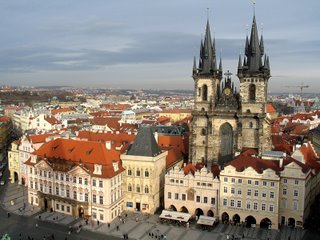Prague Through a Tourist's Eye
I recently visited the City of Prague, also known as “the golden city of spires” on Vltava River. I found Prague very attractive, and the thousand-year history was visible particularly in the architecture. The touristy Old Town, the Prague Castle, the Little Quarter and the Jewish Town made a deep impression on me with beautiful medieval, gothic- and baroque-style churches and renaissance residential buildings, museums, cafes and theaters. One could wander through the meandering streets of Prague for days in a row and continuously discover hidden alleyways and unique views.
The Communist era left a visible mark on the city’s architecture as well, but the historical part has been preserved well and revived. The Museum of Communism is a good place to learn about the terrifying atmosphere and horrors of that era.
A city makes an impression on a first-time visitor through its architectural layout, and people. Particularly people working in the service sector like hotels, restaurants, museums, and shops are the first tourists interact with. Unfortunately, I was not impressed by the Czech tourist service community. Compared to Japan, the Czech service workers did not strike me as very polite or helpful. I wonder if this attitude is manifest only to foreigners or it is rather universal. This is also the case in Moldova and other Central and Eastern European countries. I wonder about the reasons for such attitudes and behavior.
I had wonderful weather in Prague for pictures, so I want to share a couple with you.
Karlov Most and Praha Castle 
View of Church of Our Lady before Tyn from Old Town Tower 
Vltava River in Sunset




